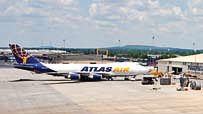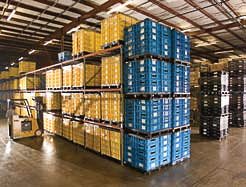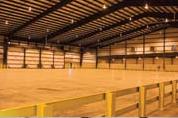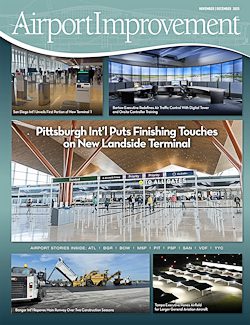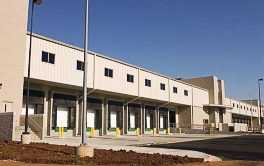
|
Port of Huntsville |
|
Facts and Figures Project: New Air Cargo Facility (expansion to International Intermodal Center) Location: Port of Huntsville, Huntsville, Alabama Port Entities: Huntsville International Airport, Jetplex Industrial Park, J.E. Mitchell, Jr. International Intermodal Center Port Owner/Operator: Huntsville-Madison County Airport Authority Designer: Barge, Waggoner, Sumner and Cannon Builder: Fite Building Company Cost: $7 million Design: Approximately 4 months Construction: 13 months |
The new air cargo building is a near-duplicate of the IIC’s 100,000-square-foot facility that the European freight company, Panalpina, has occupied since 1990. A variety of carriers, including FedEx, BAX/Schenker, Cargolux, Atlas Air, UPS Supply Chain Solution, and UPS Inc., occupy a third, 100,000-square-foot air cargo building at the IIC.
“When we initiated construction, we were maxed out on space,” says Jim Hutcheson, IIC assistant director. “We had to have the new building to enable us to grow the business.”
Foresight, Innovation and Versatility
The IIC expansion is part of a plan that began in the 1970s as the vision of its namesake, J.E. (Ed) Mitchell, Jr., the first executive director of the Port of Huntsville. Mitchell was instrumental in developing a multi-modal master plan. The plan, which the Federal Aviation Administration was initially reluctant to fund, was later adopted by the FAA and considered a “best practice” for other airports to follow.
The airport’s ability to grow and adapt to the changing business environment of the shipping industry was key to the success of Mitchell’s 1972 multi-modal master plan. “The idea was to provide a hub that offers a variety of freight transport options,” explains Bradley.
Mitchell helped initiate the land acquisition necessary to build the I-565 connector to enhance the airport’s accessibility. His multi-modal master plan included provisions for growth to a final build-out of 10,000 acres – growth that would be possible because of the Airport Authority’s foresight in locating the airport in a rural area. Mitchell played a pivotal role in acquiring Huntsville International Airport’s U.S. Customs Port of Entry designation, and in gaining Foreign-Trade Zone status.
“Mitchell saw the future of the airport in creation of a global logistics park that offers the infrastructure and services that attract major companies,” says Hutcheson. The Jetplex Industrial Park, which opened in 1974, currently has more than 60 tenants, 24-hour U.S. Customs services, USDA inspectors, freight forwarders and a Foreign Trade Zone. The IIC, Jetplex and airport occupy more than 6,000 acres of the 10,000-acre master plan.
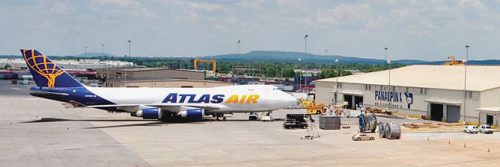
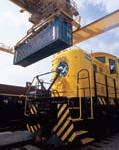
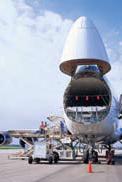
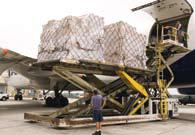
Room to Grow

Consistent with the forward-thinking that conceived the global logistics park, the Port’s concept for the new air cargo building included options for a variety of uses.
“We were maxed out on space at the IIC,” Bradley says. “When the money became available, we knew we had to expand if we wanted to continue to grow the Port’s business.” To get the most from the new building, the Port demanded a versatile design. In January 2008, the design-build project was awarded to the design firm, Barge, Waggoner, Sumner and Cannon (BWSC), and Fite Building Company.
Mike Petrin, BWSC project manager, describes the Port’s special requirements for the new facility: “The exterior design had to mimic one of the existing buildings that is used as a multi-modal cargo facility, while the interior had to allow for optional uses of the space.”
|
|
“There are a number of companies in the Huntsville area that specialize in defense systems,” explains Petrin. “The 20-foot by 70-foot bay doors allow the building space to be used for aircraft retrofitting and maintenance. The cold storage greatly increases the potential uses for the space, from pharmaceuticals to produce.”
William J. (Jack) Fite, president of Fite Building Company, adds that the unique requirements created some challenges, but the project was still completed on time in April 2009.
The Grand Plan
Thoughtful planning and a measure of foresight transformed a relatively small airport in Huntsville into an international global logistics park. “Huntsville had a global logistics park before global logistics parks were cool,” says Hutcheson. “As an inland port, Huntsville is unique in that we have land to expand and built-in versatility to accommodate a variety of tenants.”
When Mitchell conceived the Jetplex, cargo transport was primarily from rail to sea. Intermodal transport, notes Hutcheson, came with the appearance of multi-modal cargo containers. “Mitchell saw the future of the freight industry and made a plan,” he says.
Bradley attributes some of the Port’s success to being less congested than other international gateways, such as Atlanta or Dallas, which enables its customers to move freight faster. “We’re able to work directly with shippers and consignees to meet their needs,” he says.
With nearly 300,000 square feet of multi-tenant air cargo space, an airport with non-stop international cargo service, and room left to expand, the Port of Huntsville is well-positioned to continue growing its intermodal transport business and contributing to the economic growth of the Tennessee Valley region.

